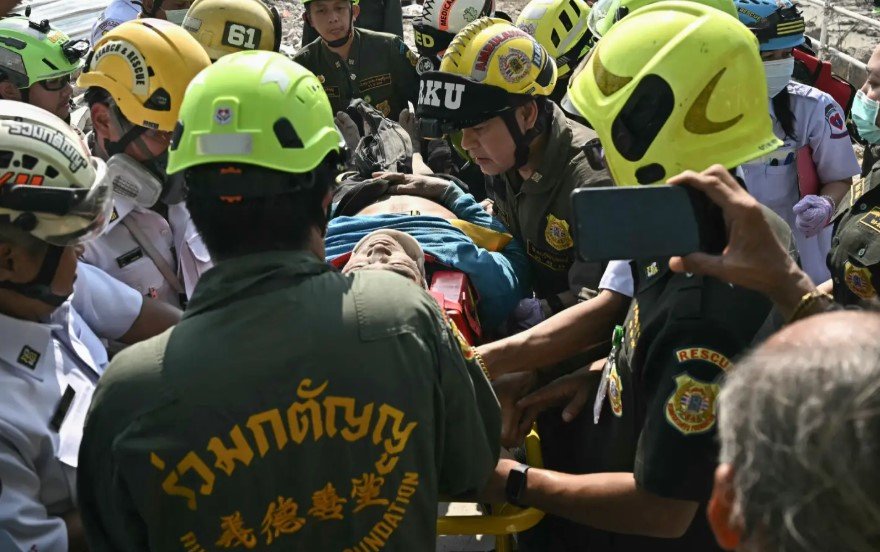A powerful 7.7-magnitude earthquake rocked Myanmar on Friday, sending tremors far beyond its borders. Over 1,000 kilometers away, a high-rise building under construction in Bangkok collapsed, killing at least eight people and raising serious concerns about its structural integrity. The Thai government has launched an investigation, especially after it emerged that a Chinese firm was involved in the project.
A Disaster Unfolds
The skyscraper, located near Bangkok’s bustling Chatuchak market, was a joint venture between Italian-Thai Development Plc and China Railway Number 10 (Thailand) Ltd. Despite being equipped with cranes and scaffolding, the 33-story structure crumbled during the earthquake’s aftershocks, leaving workers trapped under layers of concrete and steel.
Rescue teams worked tirelessly through the weekend, pulling bodies and survivors from the wreckage. Eight people have been confirmed dead, while several others remain missing. Witnesses described the moment the building gave way, with loud cracking sounds followed by a dust cloud that engulfed the area.

What Went Wrong?
Thai authorities are now facing tough questions. Deputy Prime Minister Anutin Charnvirakul visited the site and ordered an urgent probe into the cause of the collapse.
Prof. Suchatchavee Suwansawas, a civil engineer and politician, pointed out a troubling observation. “Other buildings, including high-rises still under construction, remained intact. Something is definitely wrong here. Either the design was flawed, or there were serious construction defects,” he told The Telegraph UK.
Investigators are focusing on three key areas:
- Structural Design: Engineers will review whether the skyscraper’s blueprint adhered to safety regulations and earthquake-resistant standards.
- Construction Quality: Authorities will check whether substandard materials or poor workmanship contributed to the failure.
- Project Oversight: Officials will examine if inspections and approvals were properly conducted before the collapse.
The China Connection
The revelation that China Railway Number 10 (Thailand) Ltd was a partner in the project has added another layer of scrutiny. Thai officials are reviewing the company’s previous projects and whether similar concerns have been raised elsewhere.
China’s state-backed firms have played a significant role in Thailand’s infrastructure boom, from high-speed rail to mega-construction projects. However, past controversies have fueled skepticism. Several projects have been accused of cutting corners, raising fears about safety and durability.
Building Safety Under the Scanner
This disaster has ignited a larger debate about building safety standards in Bangkok. The city has a skyline dominated by high-rise structures, many of which were built before modern earthquake codes were enforced.
Recent incidents highlight the risks:
| Year | Incident | Location | Fatalities |
|---|---|---|---|
| 2022 | Condominium Fire | Sukhumvit | 3 |
| 2019 | Mall Roof Collapse | Rangsit | 1 |
| 2016 | Hotel Structural Failure | Sathorn | 5 |
Experts warn that Bangkok’s rapid urbanization has led to aggressive construction practices. Many fear that weaker oversight and cost-cutting measures could result in more such tragedies in the future.
What Happens Next?
For now, authorities are prioritizing rescue and recovery efforts. However, the pressure is mounting for answers. If negligence is found, those responsible could face criminal charges.
The collapse has also raised questions for developers and contractors operating in Thailand. Will this lead to stricter safety regulations? And will foreign firms face more scrutiny before being allowed to participate in major projects? The answers may shape the country’s construction industry for years to come.
